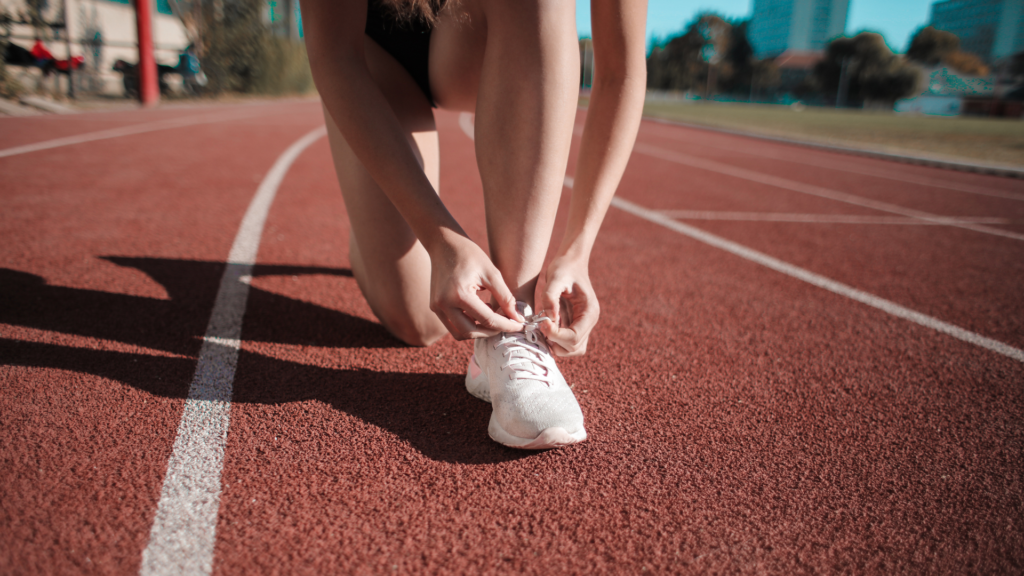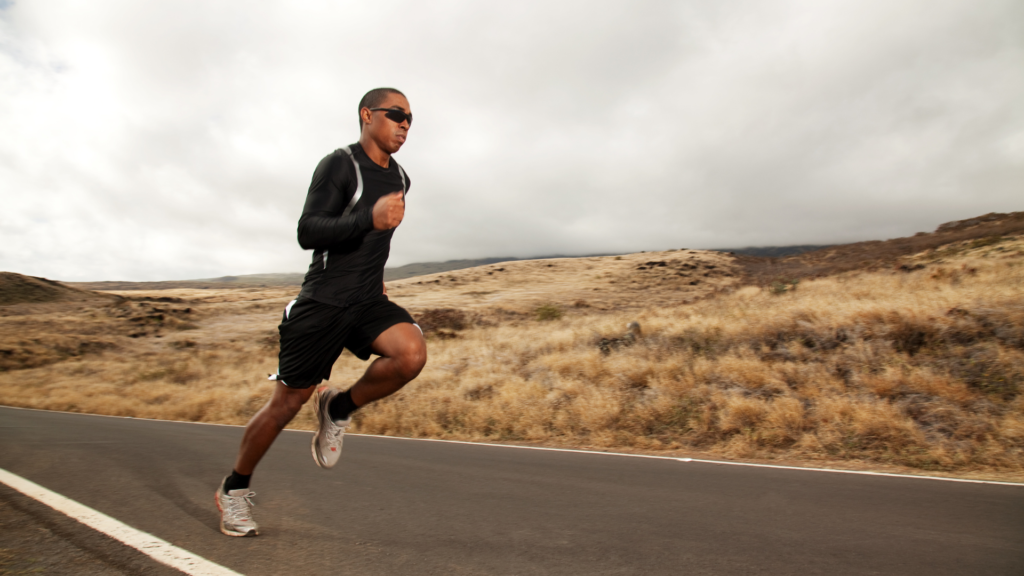Running your first 5K. 8 Top Tips To Succeed
Running your first 5K can be an exciting and challenging experience. Whether you’re a beginner or an experienced runner, there are a few tips and tricks that can help you prepare for and complete your first race.

Starting out running can be very daunting. What do I wear? How do I train? What is cross-training?
These are questions that most people have asked and this article should shed some light on these important questions and give you 8 Top Tips for success
In this article, we will discuss all of these to help you out when you are getting started. Running a 5K is an awesome achievement so without further ado let’s get into it!
1. Setting a goal
Before you start training, set a goal for yourself. This could be a time you want to finish a race or even just a specific distance goal you may have.
Goal setting is something that everyone needs to do. It helps you stay motivated when times get tough and keeps you on track every day. Make sure that your goal is achievable, and not too much in one go.
One way that can be useful is by giving yourself smaller milestones on the way to your main target. I know from experience that working towards a 5k, it is good to have milestones for your first continuous kilometre, 2.5k (halfway there) then 5K. This way I have 3 celebratory moments during my training and the full 5K doesn’t seem so overwhelming.
Keep yourself on target by writing your goal on a sticky note and putting it in a place where you can see it every day, to remind you why you started.
Or even just by talking to yourself each morning in the mirror!

2. Get the right gear
Gear choice is overwhelming at times when there are so many options out there and so many opinions regarding footwear, clothing, lubrication?? and much more
Luckily it is pretty simple when you get down to it. All you need to run is some shoes, and for most of us, some clothes. You can look at bags and water bottles for the bigger miles but as a starting point don’t overcomplicate things.
Shoes
Investing in a good pair of running shoes that fit well is awesome. When you find a pair that fits like a glove it is worth getting a backup pair as inevitably when you go back to the shop for a replacement they will be discontinued and the next generation pair just will not be as comfortable.
Wearing the right gear can help prevent injuries and make your runs more comfortable. There are many ways to get the right pair for you. To make it easy here are 3 decisions;
What surface are you running on?
If you are running on hard roads and paths maybe opt for a shoe with more cushioning to support your feet and cushion the hard repeated foot strikes
If you are running on grass or trails then maybe trail shoes would be better for you, or even some more minimalist footwear to feel the ground under your feet

Minimalist footwear warning- if you are not used to shoes with no cushioning ease yourself into the shoes. Short runs to get you used to it. If you have always had soft cushioned shoes your feet will not be used to being so unprotected and the muscles in your feet will be weakened over time.
It takes time to get stronger.
Have a shoe fit
More and more running shops offer stride and gait analysis as well as giving you the option to try on different shoes and use them on different surfaces or even go for a test run. This is a really good way to get a pair that fits you well and to find the one that feels most comfortable for you.
Don’t be afraid to ask questions and be hesitant. Your shoes will last you for hundreds of kilometres of running so make sure they are the ones for you.
Going to your local running shop may be a bit more expensive than online stores but you get a personalised service and you are supporting local companies.
Ask other runners
Runners, I admit, have a lot of opinions – but they are all based on their own running experience. All of us have stories of runs that go wrong and why we do what we do. These nuggets of information often become invaluable sources of tips and tricks to keep you right on the road.
Ask about different brands of shoes, why some are better than others, and why does that one runner wear five-toed shoes??
There will be a story behind each choice

Online reviews
And of course, online reviews are a good way to gauge how the shoes fit most people. There are tens or hundreds of reviews for each shoe from a range of runners
However you don’t know the validity of each reviewer, but it is still helpful to get an idea of whether the shoe is comfortable and light
Clothing
This is an easy one! Just like the shoes get something that fits and is comfortable. You won’t need to buy state-of-the-art moisture-wicking technology with air vents and a pedometer built in. Just a comfy top and running shorts is a good place to start.
Some sports socks are always a good idea as normal socks tend to be quite warm after a while and you can pick a couple of pairs up pretty cheap
You can go as fancy as you like on clothing but at the end of the day, if you are comfortable and functional, that’s all you need.
3. Create a training plan
A good training plan will help you gradually increase your mileage and build up your endurance. There are many 5k training plans available online, or you can create your own. It’s important to start small and increase your mileage and intensity gradually to avoid injuries.
A good general rule of thumb is the 10% rule. The 10% rule is about limiting yourself to your next longest run being no more than 10% longer than your last longest run. This rule isn’t super accurate but can steer you in the right direction if needed. You can also use it for your weekly load (your weekly mileage) so you don’t overtrain.
Often a good training programme will be week one medium load, second week long run and longest mileage and third week of rest, repeat
Training programmes to work off are available on this website, so even easier!

4. Mix up your training
Going out for a run every day is great but if you want to maximise your performance then getting into the gym or back garden once a week can really help. Strength training exercises such as squats, lunges and planks can help build the muscles you need for running.
This builds the important muscles in your body and helps to keep you fit and balanced. Being strong will also help you prevent injuries, by allowing your body to be as ready as possible for running stress and any trips and slips you might have, and it also improves your overall fitness level.
To prevent boredom and keep your body guessing, mix up your training by incorporating different types of runs, such as interval training or hill sprints. This will help you build endurance, and strength and improve your overall fitness.
5. Use a proper running form
Good running form can help you run more efficiently and prevent injuries. We are built to run, so if running seems uncomfortable or painful then something has gone wrong.
Whether you learn through youtube or books or courses there is loads of help out there. You could book a few sessions with a local running coach to help you get your form corrected.
There are also great books out there, such as Chi Running by Danny Dreyer (I used this book while I trained for my first 100-mile run).

Focus on landing on the midfoot, keeping your shoulders relaxed, and maintaining a steady pace. You can also find some videos online that will show you the proper running technique. Keep some focus on your posture, imagine keeping your spine stacked up straight and your feet landing under your body.
With form it is good to work on it gradually so you’re not changing too much at one time.
6. Get enough rest
Rest is just as important as training. Make sure to get enough sleep each night and give your body time to recover between runs. Sleep is when your body starts to rebuild the damage in your muscles, allowing you to grow and get stronger. SO 6-8 hours minimum is perfect.
If you feel tired or sore, it’s better to take a day off and rest, than push yourself too hard. Remember consistency is the key to success. 1 missed day is better than injuring yourself over training and missing a week or more!
7. Stay hydrated
Drinking enough water is essential for staying healthy and performing your best. Be sure to drink plenty of water before, during, and after your runs. Try to drink at least 2 litres of water a day, and try to either bring water with you during your runs or at least have a bottle waiting for you when you finish.

8. Have fun and stay positive
Running is supposed to be enjoyable, so try to have fun with it. Find a running buddy or join a running group, and make running a social activity. This will help you stay motivated, and make your training more enjoyable. The more fun you have the more likely that running will become a key part of your life.
Look at the best runners in the world, running isn’t a chore they love it and so can you.
Running your first 5k can be a great achievement and a lot of fun. By keeping these tips in mind, you can be well-prepared for your first race, and have a great time while doing it. Remember to set a goal, get the right gear, create a training plan, mix up your training, use the proper running form, get enough rest, stay hydrated, and have fun.
Good luck and enjoy!